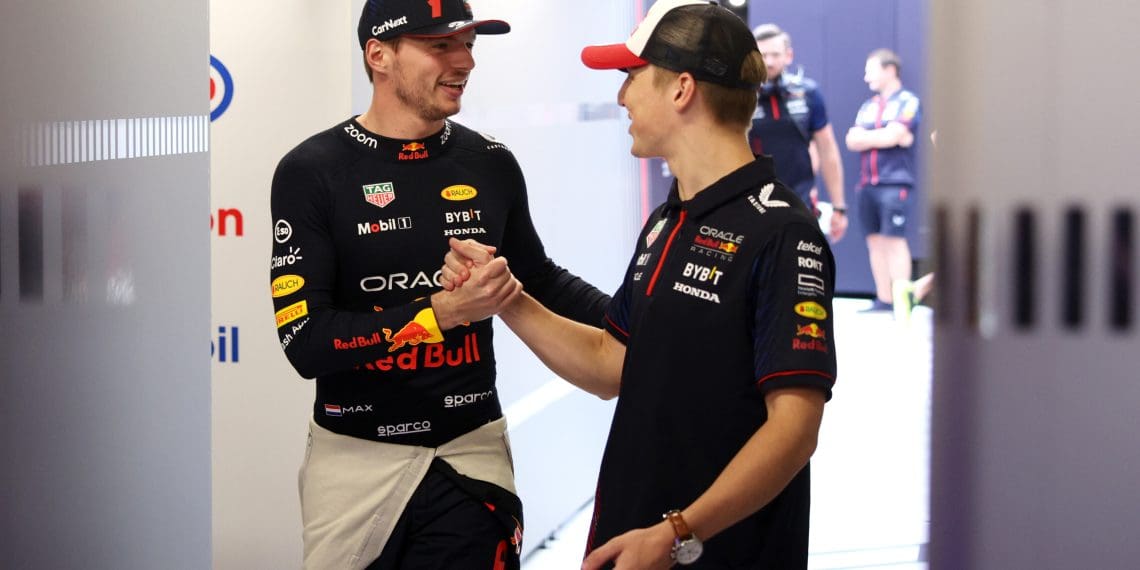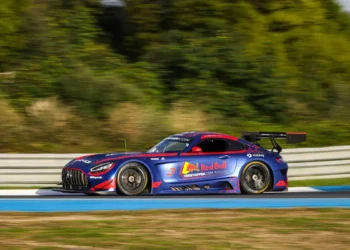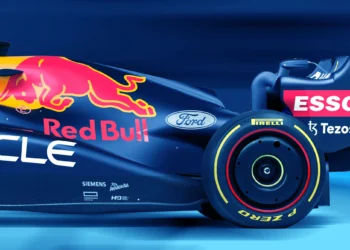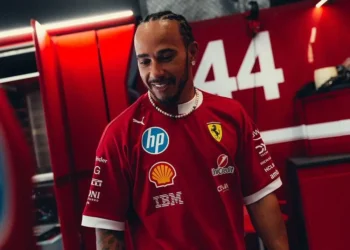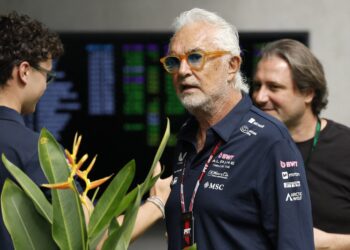Liam Lawson is set to join Red Bull Racing, stepping into one of Formula 1’s most coveted seats—but also one of its most daunting. Partnering with Max Verstappen, a generational talent and three-time world champion, presents an unparalleled opportunity for Lawson but also a litmus test that has derailed the careers of drivers like Pierre Gasly, Alex Albon, and Sergio Perez.
At the heart of Verstappen’s dominance lies his uncanny ability to extract performance from cars designed with razor-thin margins for stability. For Lawson, succeeding alongside Verstappen will mean navigating one of the toughest challenges in motorsport.
Why Verstappen’s Talent Changes the Game
Verstappen’s mastery of unstable cars is a defining trait. As Christian Horner explained, Verstappen thrives on initial corner entry, where many drivers struggle. His ability to manage a “loose” rear end allows him to push Red Bull’s cars to the limits of their aerodynamic potential.
- Aero Balance: Red Bull’s development philosophy often follows Verstappen’s preferences, creating cars with highly responsive front ends that generate peak downforce efficiency but demand exceptional skill to control.
- Extreme Sensitivity: Former teammate Alex Albon likened Verstappen’s car control to using a computer mouse set to maximum sensitivity—any hesitation or overcorrection can ruin a lap, or worse, send the car off the track.
The Downside of Design for a Single Talent
Red Bull’s design philosophy is not intentionally tailored to Verstappen, but his ability to find laptime in a highly unstable car often drives the team’s development choices. Twice in recent years—2020 and 2024—this approach led to diminishing returns. As Verstappen continued to adapt, the cars became progressively harder for teammates to manage, exposing weaknesses in performance elsewhere.
- Sergio Perez’s Struggles: In 2024, Perez’s performances declined sharply after Red Bull introduced upgrades that shifted the car’s aero balance forward. While Verstappen maintained a high level of performance, Perez’s struggles highlighted the car’s growing instability.
- The Imola Inflection Point: By mid-season, Red Bull realized their development path had made the car too difficult even for Verstappen to consistently exploit. Adjustments came too late to save Perez’s season, further illustrating the fine line Red Bull walks with its design philosophy.
What This Means for Lawson
Lawson has impressed in his brief F1 career, showing adaptability and confidence in high-pressure scenarios. But thriving at Red Bull requires more than just talent—it demands an extraordinary ability to manage instability and extract laptime from cars at the edge of control.
For Lawson, the key challenges will include:
- Adapting to the Car’s Characteristics: Like his predecessors, Lawson will need to manage a forward-leaning aero balance that amplifies rear instability on corner entry.
- Avoiding a Confidence Spiral: As past Red Bull drivers have found, falling short against Verstappen can lead to overdriving, crashes, and further erosion of confidence.
The Verstappen Paradox
The Verstappen dynamic creates a paradox for Red Bull. The team develops cars toward the limits of performance, often exceeding the driveability threshold for all but Verstappen. This creates a situation where teammates are left playing catch-up, while Verstappen’s talent masks underlying design limitations.
- Peak Performance vs. Driveability: Red Bull’s technical team must balance maximizing laptime with ensuring the car remains manageable for both drivers. Exceeding this balance risks leaving Lawson—or any teammate—floundering.
- A Unique Aero Challenge: Current regulations, with rear-biased ground effect floors and oversized front wings, exacerbate the difficulty of achieving a balanced car. Verstappen’s preference for sharp front-end response adds another layer of complexity.
Lessons from History
Drivers like Carlos Sainz and Daniel Ricciardo held their own against Verstappen early in his career, but the Red Bull of today is a far more demanding machine. While Verstappen continues to adapt to extreme setups, Lawson must prove his ability to do the same—or risk falling into the same traps as his predecessors.
The Road Ahead
For Lawson, the challenge is clear: adapt quickly, remain mentally resilient, and find his own way to thrive in a car designed for one of F1’s greatest talents. His future at Red Bull may hinge on something as fundamental as his neural wiring—his ability to “feel” the car in the way Verstappen does.
As Christian Horner noted, “It’s not impossible to compete with Max Verstappen as a teammate, but it is probably the hardest gig in Formula 1.” For Lawson, success will require both extraordinary skill and the mental fortitude to withstand the Verstappen benchmark. The opportunity is immense, but so are the risks.

